It would seem that it is easier than buying an ordinary seat for a completely ordinary toilet? However, many homeowners are easily confused by this situation. And no wonder, because specialized stores are teeming with assorted products, sometimes radically different from the accustomed ideas. And quite reasonable questions are being read: how to choose the right size, why do you need a toilet lid, and which is better - a soft toilet seat or a standard plastic one, but easy to clean? Lots of doubts. Therefore, before buying it is better to understand.
Quite a standard picture: the bathroom is equipped with an ordinary ceramic product, equipped with a seat with a lid, which in most cases always remains open. A reasonable question arises, why is it provided at all then?
Most households perceive this element as an integral part of the toilet room, thinking little about the real purpose. However, the lid of the toilet bowl is necessary to protect the surrounding area from bacteria that can spread around, especially "activating" when flushing. Well, the second function is the creation of external aesthetics.
Toilet lid - choose the right one
Unfortunately, such products tend to often break or become covered with cracks. Repairing a toilet lid is practically useless, it’s more logical, faster, and even easier to buy a new one.
What are the seats made of?
The most common and popular material for the manufacture of such items is plastic, PVC or polypropylene. Lightweight, comfortable toilet seats are very easy to care for, but short-lived. Even with very careful handling, sooner or later cracks, scratches and stains appear on the surface.
In "second place" is a soft toilet seat, which consists of a solid frame wrapped with a film. The filling of a kind of sandwich is soft foam rubber. A very comfortable device that also does not require special care. But, similarly to plastic specimens, it lives for a maximum of six months, gradually becoming unusable. The advantage is that it's cheap.
The third option is fabric toilet seat pads. Some manufacturers have gone a step further and launched toilet seats already wrapped in fabric. Accordingly, the price has increased compared to the two previous options, but the operational properties are definitely worth it. Fabric wraps are easy to remove, easy to wash and dry, they last much longer than their counterparts, and they look much prettier.
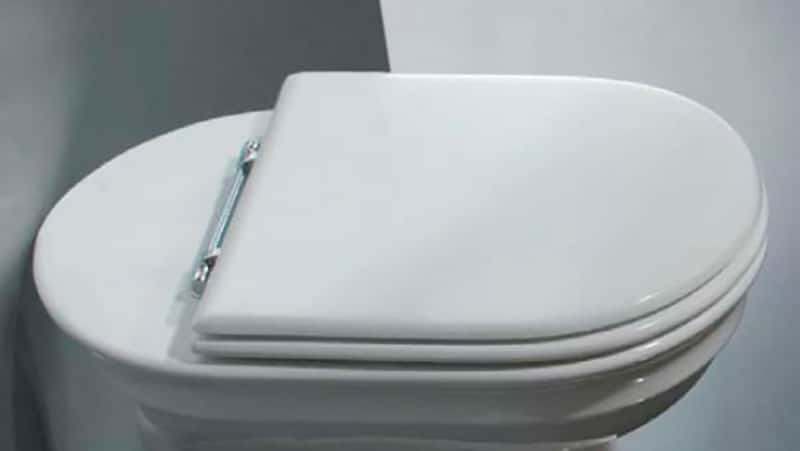
Choosing the right size toilet lid
A fourth representative of materials for toilet seats has also appeared - duroplast, which combines the appearance of ceramics, the convenience of plastic and the strength of wood. Such products are superior to opponents not only in terms of quality, but also in terms of weight - they are much more massive and heavier. Price according to functionality is higher. Duroplast products are very durable, resistant to mechanical damage, moreover, the surface is often treated with a special compound that can kill bacteria. A similar toilet seat and lid for the Keramin toilet bowl are suitable.
Rounding out the "hit parade" of materials for toilet seats are wooden specimens. Natural material has considerable strength, stability, elegance and attractiveness. But the weight of such an object is very significant, which is fraught with the danger of improper operation to damage the design of the toilet bowl as a whole.
Types of seats and covers
A toilet seat with a lid, no matter how trite, can be completely different colors, sizes and shapes. So, covers are:
- Model - usually going together with a toilet seat and suitable specifically for one type of seat.
- Universal - designed for all types of toilet seats.
If the model cover is broken, the owner often has to go through an exciting “quest” to find a new copy.
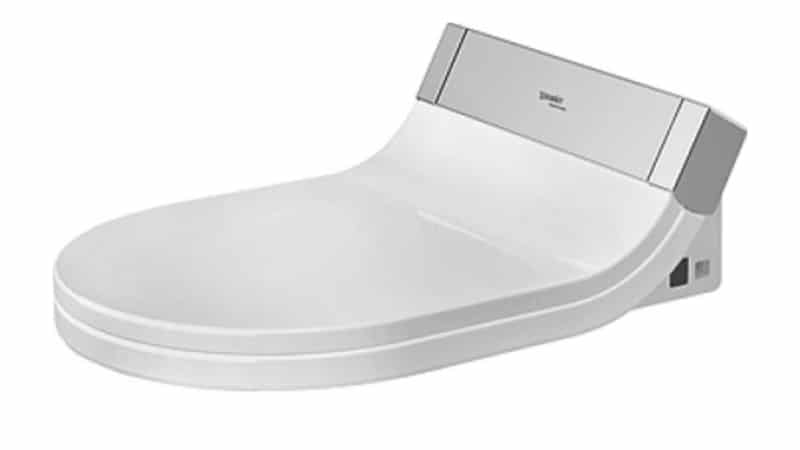
Innovative toilet lid
Usually the seats are limited to an oval shape. But toilet lids can have a wide variety of sizes and appearance - from a musical instrument to an animal figure, as well as be decorated with illustrations or additional decorative elements. This option will definitely appeal to fans of non-standard solutions and those who want to bring a bright touch to an ordinary room.
The functionality of the toilet seats
A couple of decades ago, toilet seats performed only one, the most important, fundamental function - hygienic. Progress, which never stands still, has reached the toilet bowls: additional opportunities and “skills” have appeared.
One of the most common achievements, which is deafeningly popular with haters of loud sounds, is a microlift, which is a device for slowly and smoothly lowering the lid.
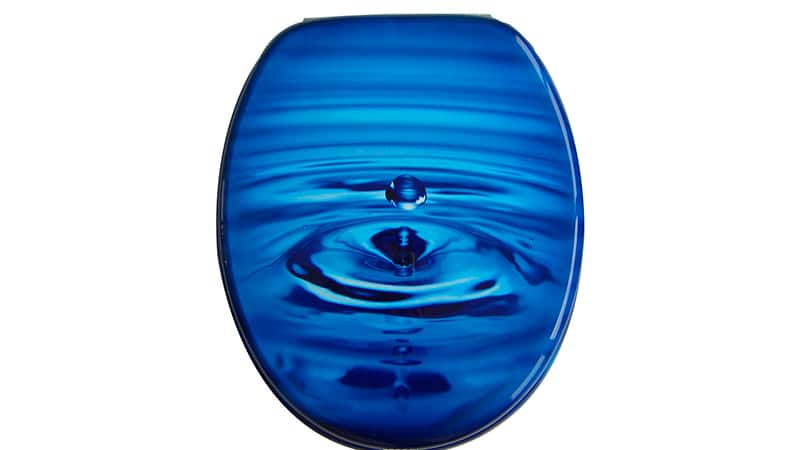
Original toilet lid
Other functions are quite varied:
- Heating of a stool will please fans of heat.
- IR beams will make life easier for lazy users by automatically triggering and operating the toilet lid.
- The combined seat with bidet optimizes a small space and will greatly help those who need to have both devices in the same room. In addition to the main shower, modified models include lighting, water heating and even a hairdryer.
- Instances with built-in electronics are "smart" inventions: they are able to repel dirt, clean themselves, heat the surface of the toilet seat, while being easily removed and operated.
Manufacturers do not stop there and create devices that combine all the functions, and even equipped with additional options:
- automatic flushing with several modes;
- the possibility of self-deodorization;
- hydromassage services;
- music players, radios or audio systems;
- anti-freeze functions for models installed in unheated and cold rooms;
- sound notification of the failure of a single element.
The owners of such units, filled with "space" properties, manage their property using a special remote control, usually located on the side of the product. But there are also remote options.
Individual models
Families with small children used to manage with all the usual pots: it was problematic and dangerous to put a child on the toilet. Now there are numerous helpers for parents designed to facilitate the care of babies, including a toilet seat for children. This device will not only greatly simplify the child's "coping" needs, but also contribute to the rapid weaning from diapers and potty.
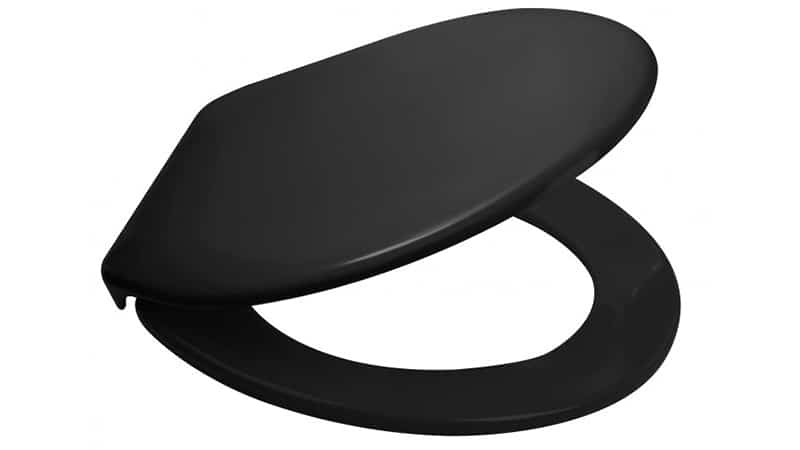
It is important to consider only a few points:
- Size: you can either choose a universal toilet seat or buy a model already equipped with a child device. The main thing is to fit in size.
- Color: bright, juicy palette and cheerful drawings will attract the baby more than a plainly painted surface.
- Convenience: It is desirable that the toilet seat be made of a warm material that is soft to the touch.
There is a "family" option, which provides for a separate toilet seat for each tenant, while all the mugs are stacked like a pile. Intending to use the device for its intended purpose, simply takes out "his" seat. However, this option is unacceptable for houses in which there are often guests.
Producers have also provided options for people who have temporarily lost the ability to move, and the disabled. Given the difficulties that this part of the population faces when performing hygiene procedures, manufacturers have released special devices equipped with additional options. These include conventional or reclining armrests and seats located 15-20 centimeters higher than conventional toilet seats. In addition, such structures are securely fastened without fail and often have a height adjustment function.
With the choice of color and additional functions, there are usually no problems, while choosing the right size toilet seat becomes the most important task. Therefore, before you go to the store, you should decide on the parameters. To do this, using a long ruler, soft meter or tape measure, you need to calculate the distance between the sides of the toilet in width, measure the length between the mounting holes. It should be borne in mind that the toilet seat should “look out” at least 0.5 cm beyond the main structure.
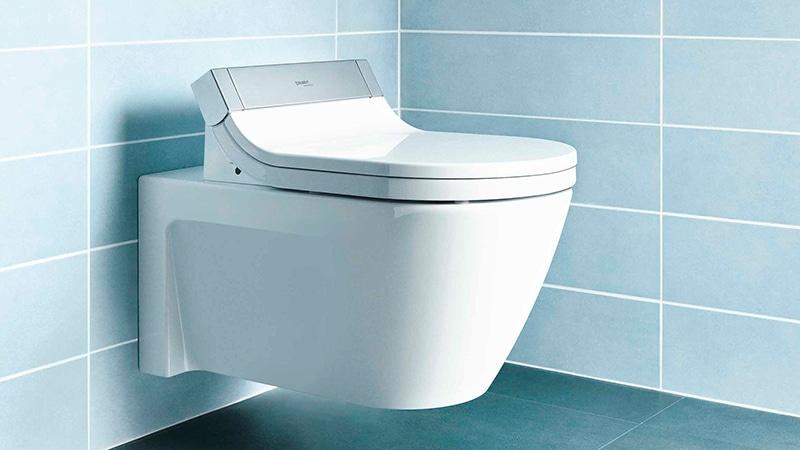
Lid for toilet bowl with microlift
After the seat parameters are determined, the question of “how to choose a toilet lid by size” no longer seems difficult. To do this, measure the distance between the holes for attaching the lid, the full width of the toilet from right to left, and the length from the center of the lid installation site to the front edge of the structure. It is better to write down the received numbers and go to the store along with the leaflet.


















